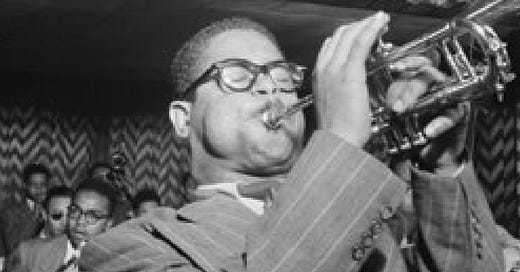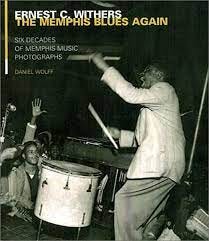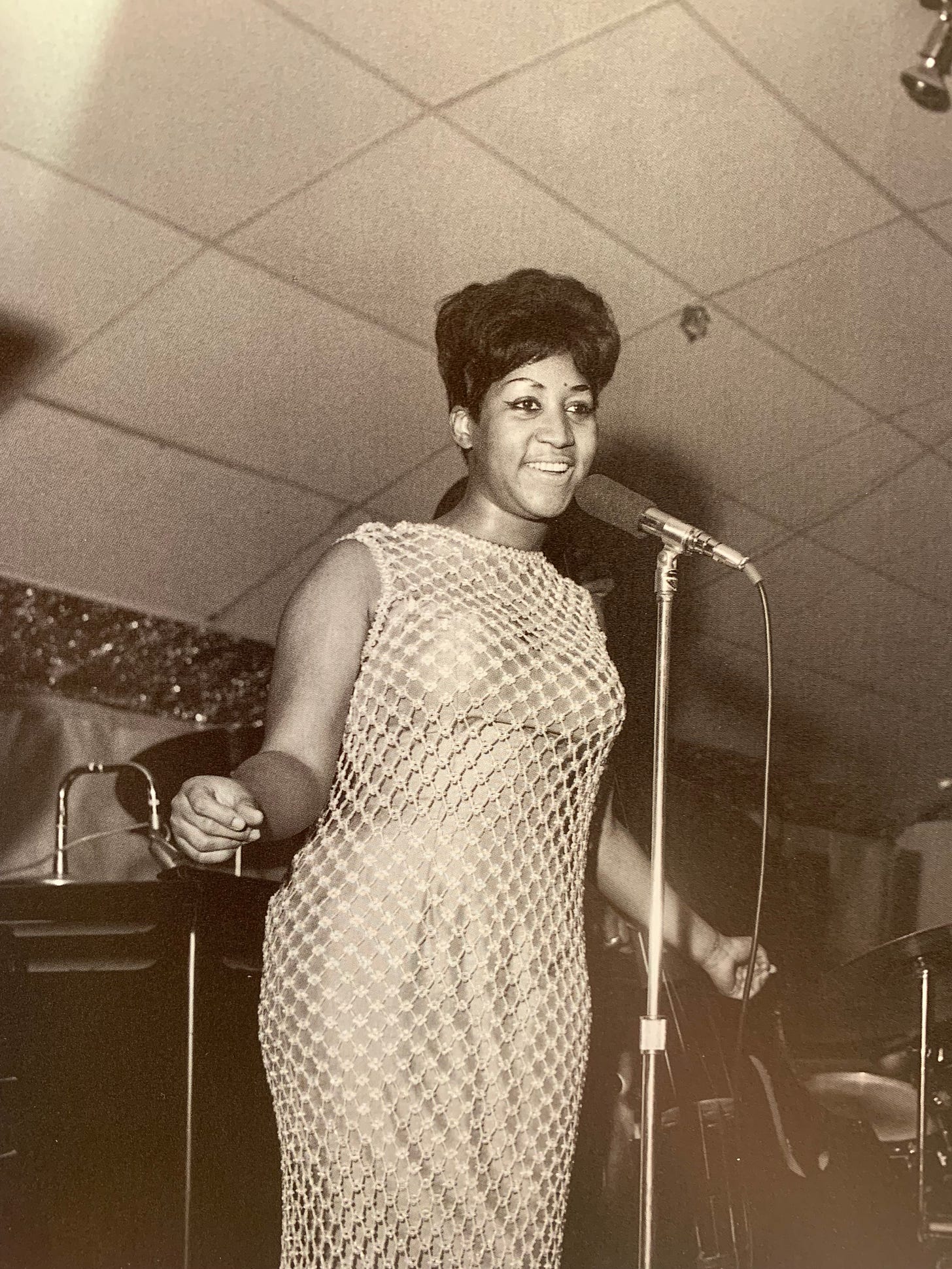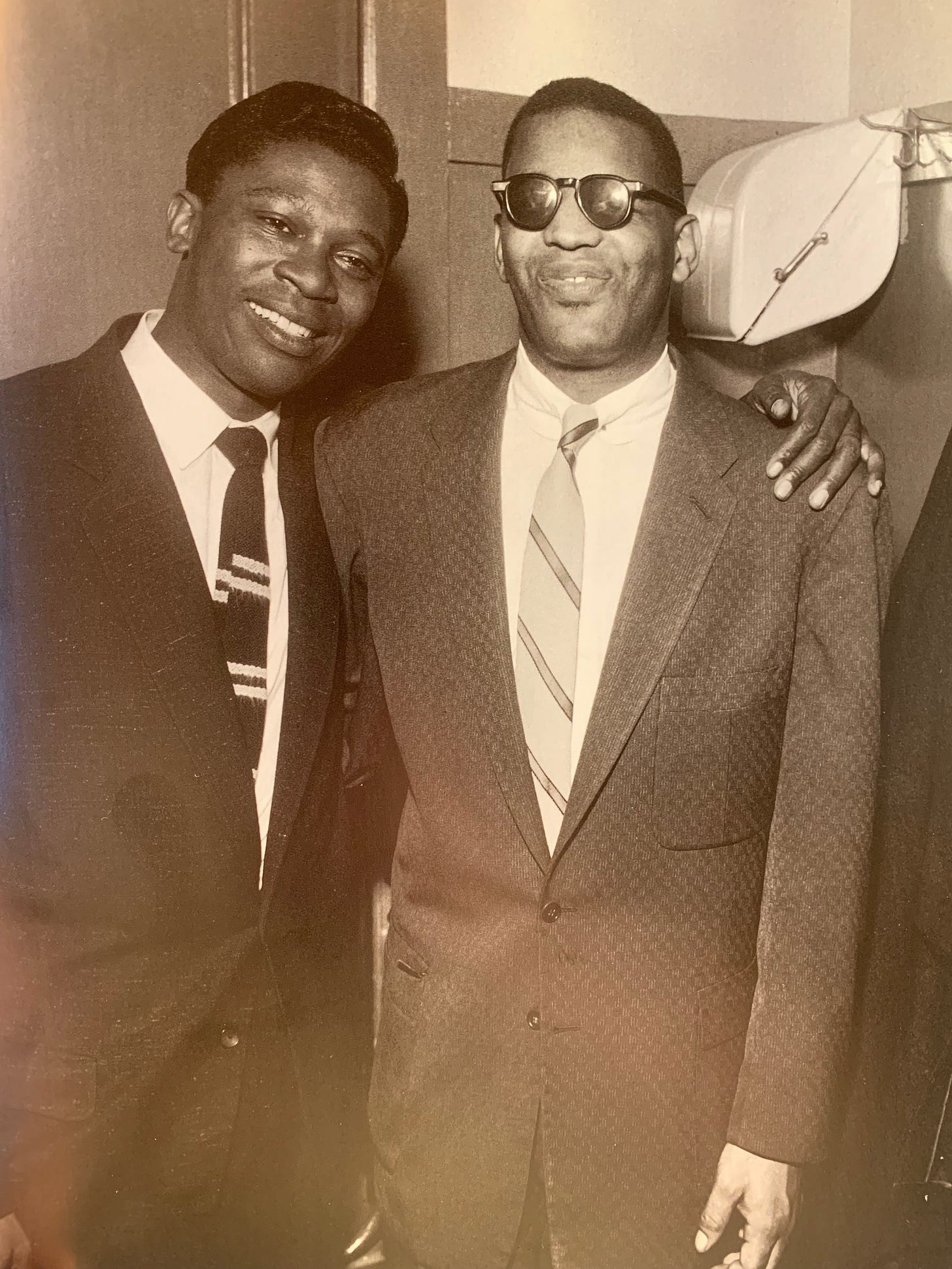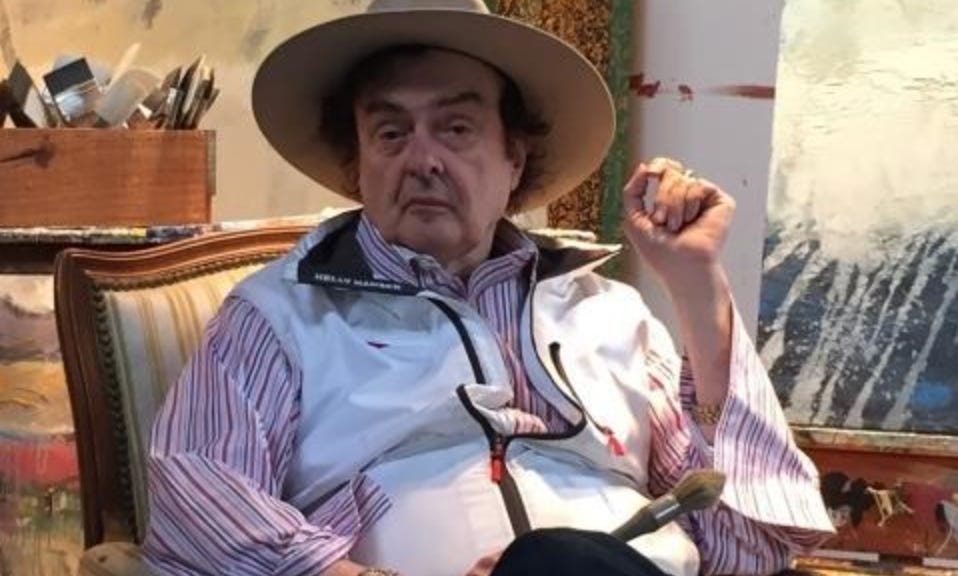Candids of Kings
“In conclusion, there is no conclusion. Things will go on as they always have, getting weirder all the time.”― Robert Anton Wilson
One of my prized possessions is a photography book of rhythm and blues musicians taken by Ernest C. Withers called The Memphis Blues Again. It was given to me by Withers, on the occasion that friend and writer Andria Lisle took me to his office on Beale Street to meet him and see his archives. In a world of white photographers sent down to the south to chronicle the civil rights movement, Withers was one of the few African-American cameraman (along with others like Moneta Sleet Jr.) whose lens told the story from the inside. He took many of the iconic Martin Luther King photographs as well as photographs of post-assassination Memphis. He was there to photograph the Emmett Till trial and he housed James Meredith when his life was threatened, the evening before Meredith became the first black student at Ole Miss.
The Memphis Blues Again is all about his music-oriented shots taken in the 60s. And talking about telling the story from the inside: Withers was already on-stage and back-stage and post-back-stage at all the clubs, and happening areas, where the musicians were performing and hanging. While most photographs you see of the great Rhythm and Blues legends from that time are posed studio promo shots, more pomp than character, Withers was able to capture the glows of greatness that emanated from their beings. You feel the explosiveness of Ike and Tina Turner live show, the mighty power of Ruth Brown, the voice that built Atlantic records, from her stage/pulpit, the whites of Ray Charles eyes—even through his shades—as he stands happily next to BB King. Withers’ photos add a new melody to the music of the past, the sound waves shooting from the on-stage mikes of a time-gone-by, through the ink on the page.
Withers died in 2007 and in 2013 FBI documents were released exposing Withers as an FBI informer around the civil rights movement from 1968 to 1970. The same person who drove photographer Joseph Louw from the Loraine hotel to develop the film he had just taken at the moment MLK was shot…that same person was a spy in his own community.
In reading many articles attempting to understand the tough revelation, it is apparent that there are different ways at looking at this revelation. While there are many who see Withers’ legacy permanently stained, there are others who have a different take. Due to the nature of his work and life, Withers had run-ins with the FBI for years, and the information he would give them was nothing that the bureau did not already know—his involvement might not be as insidious as it seems. In a New York times article, Andrew Young, a civil rights organizer who later became mayor of Atlanta said “It’s not surprising. We knew that everything we did was bugged, although we didn’t suspect Withers individually.1”
There is the artist, there are his photographs and there are the thousands of stories in between that inform the other. And for a storyteller like Ernest C. Withers, his life story may complicate his artistic legacy, but does not take away from the history he essayed by way of his camera lens. Which makes the NAACP’s Boulder Colorado exhibit an exciting 2022 happening…and something I hope tours. What looks to be a comprehensive view of his social justice work, it tells a story about an incredible historical era that only he could tell and that is so important to hear. It may not feature Ray Charles or Aretha Franklin or Howlin’ Wolf (oh yeah, the pictures he took of the Wolf and his band are just classic) but maybe that exhibit is around the corner….
TOMORROW WITH TOM SNYDER: A RECONSIDERATION
Rabbit Hole alert…this loving deep dive into Tom Snyder’s Tomorrow Show, provided by the always great PLEASE KILL ME website, features Snyder interviews with Ken Kesey (with the Grateful Dead), The Ramones, Iggy Pop, Jimmy Hoffa, John Lennon and more.
Richard Diebenkorn student Ira Yeagar passes away
My Mom studied art history in school and has been painting since the 60s (she has never publicly shown her work). She followed, and was inspired by, the Bay Area Figurative School who were very active in that time: Richard Diebenkorn (her favorite), Elmer Bischoff, Wayne Thiebaud and others. As I was growing up, my Mom made sure we went to any gallery show featuring members of the movement (which I am so thankful for). She was at our house last weekend talking about the passing of Ira Yeagar, whose work I was unaware of, who was a student of both Diebenkorn and Bischoff. His obituary is a fascinating read of a life well lived. RIP.
Discover a world of jazz in the new issue of The Library of Congress Magazine
The Library of Congress publishes a pretty incredible quarterly magazine exploring their massive collection. This recently published edition is all about jazz with one articles about: the work of Duke Ellington collaborator Billy Strayhorn, their collection of William Gottlieb’s photographs, a deep dive into Hazel Scott’s rise to fame and almost fall, Jelly Roll Morton’s Alan Lomax recordings, anon.
The Quest to Protect California’s Transcontinental Railroad Tunnels
I have heard of these railroad tunnels above Donor Lake….I might have even seen a glimpse of one on a sojourn up to Tahoe, but did not know their backstory or the struggle ongoing to protect them: “The Summit tunnels should be as evocative to us as when we hear the words Trail of Tears, the Underground Railroad, the Oregon Trail or Route 66,” says Gong. “It’s part of the Chinese American experience but every American should be proud of what’s represented there.”
Spirits of the Dead
By: Edgar Allan Poe
Thy soul shall find itself alone
'Mid dark thoughts of the grey tomb-stone --
Not one, of all the crowd, to pry
Into thine hour of secrecy:
Be silent in that solitude
Which is not loneliness -- for then
The spirits of the dead who stood
In life before thee are again
In death around thee -- and their will
Shall then overshadow thee: be still.
For the night -- tho' clear -- shall frown --
And the stars shall look not down,
From their high thrones in the Heaven,
With light like Hope to mortals given --
But their red orbs, without beam,
To thy weariness shall seem
As a burning and a fever
Which would cling to thee for ever :
Now are thoughts thou shalt not banish --
Now are visions ne'er to vanish --
From thy spirit shall they pass
No more -- like dew-drop from the grass:
The breeze -- the breath of God -- is still --
And the mist upon the hill
Shadowy -- shadowy -- yet unbroken,
Is a symbol and a token --
How it hangs upon the trees,
A mystery of mysteries! --
https://www.nytimes.com/2010/09/14/us/14photographer.html

